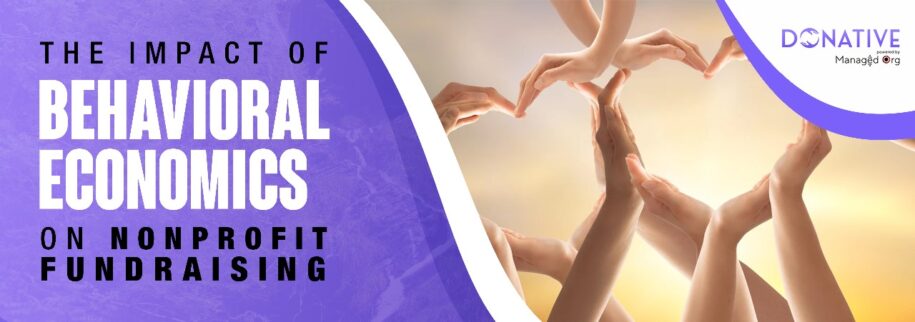Behavioral economics is a combination of psychology, economics, and neuroscience that would help in transforming nonprofit fundraising strategies. When nonprofit organizations get a better understanding of their decision-making process and what motivates the donors, they can come forward and create more engaging campaigns. These campaigns will be emotionally compelling and will truly connect with their audience.
Principles of Behavioral Economics in Fundraising
We are listing out a few significant behavioral economics principles that are highly relevant to the concept of nonprofit fundraising.
Celebration and Temporal Discounting – When you celebrate and recognize the contribution of your donors, right after they donate, it can generate positive emotions and strengthen their giving mentality. The quicker you celebrate their donation, the stronger your connection turns out to be in the future.
Positive Labeling – As you recognize and appreciate the donors for their generosity and positive traits, it will inspire them to enhance those positive qualities. It will encourage them to keep supporting your nonprofit through more donations.
Framing – The way you frame a fundraising message can deeply influence the actions of your donors. Integrating emotions such as pride, happiness, sympathy, etc. can be persuasive and it is better than just sticking to logical points.
Heuristics and Biases – When nonprofit organizations understand the mental shortcuts and biases that guide people’s decisions, NGOs can create excellent fundraising messages. These messages can connect with the donors on a subconscious level, helping them to be more effective.
Applying Behavioral Insights to Nonprofit Fundraising
The below listed principles can be applied to different aspects of their fundraising efforts.
Donor Communication – When you communicate with your donors, it is important to design fundraising messages that would connect with the donors on an emotional level. You can use positive language or encouraging words, creating a sense of urgency. Such an approach can enhance donor engagement and there will be higher chances of them responding successfully.
Donation Platforms – Creating online donation forms and designing the confirmation pages help in acknowledging the donor’s contribution. It will help in offering instant donor satisfaction and can strengthen the positive emotions associated with charity giving.
Donor Segmentation – Nonprofit organizations can improve their fundraising campaigns by classifying the donors based on their preferences. With the help of behavioral insights, nonprofits can create personalized, engaging, and more focused campaigns. These messages ensure the development of deep connections with the various donor groups. It will make the donors feel valued and understood.
Donor Stewardship – By using various techniques such as positive recognition and celebrating the contributions of donors, nonprofits can build stronger relationships with them. It will also inspire the donors to extend their support and commitment constantly.
What Are the Top Benefits of Applying Behavioral Economics to Nonprofit Fundraising?
Through the integration of behavioral economics principles into fundraising strategies, nonprofit organizations can explore various benefits. It includes:
Maximized donor engagement
Increased participation from donors in fundraising campaigns
Enhanced donor retention
Efficient use of fundraising resources and better ROI
Conclusion
Behavioral economics acts as one of the valuable tools for nonprofits to understand how their donors think and act. It helps the organizations to get an insight into donor behavior and preferences. By successful integration of these principles into their fundraising efforts, nonprofits can create campaigns that would connect with the donors emotionally. It will lead to successful efforts in maximizing support for their causes.

